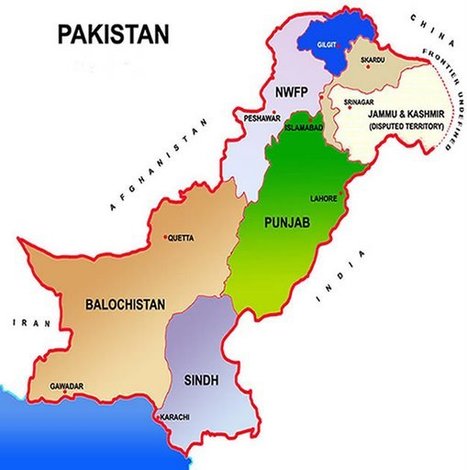"The name of the country Pakistan has a fascinating history - it is essentially an acronym! Prior to 1947, the country now known as Pakistan was a British colony. In 1947 the United Kingdom granted independence to the region under a new name, Pakistan. The name had been developed by a group of students at Cambridge University who issued a pamphlet in 1933 called Now or Never."
In a country with such great ethnic divisions, a common religion is a powerful nationalizing force. As the capital city of Islamabad's toponym powerfully states (the house or abode of Islam), religion remains an important element of national identity for Pakistanis.



 Your new post is loading...
Your new post is loading...










This is an issue that citizens and governments struggle with all around the world. Spots like this one, which is "the oldest continuously inhabited European settlement on the Pacific coast of the Americas", are treasured by residents, citizens, and tourists alike. But when does a historical area need to adapt to growing populations (and therefore increasingly congested streets)? Or should they at all? Projects like these take a lot of time, effort, and money to complete. When visual reminders of local history are taken away, it risks the chance of the knowledge of the history being lost as well. The funny thing is, this development is felt to be necessary in order to better accommodate large influxes of tourists which are attracted to this historical site, which if the development takes place, may ruin the charm of the neighborhood; it is a viscous cycle.
The preservation of this neighborhood is important for one's sense of place. The marine viaduct would take away for the history that is embedded in Panama City. While a viaduct would be incredibly useful and profitable, i understand why residents would be concerned.
Just from looking at this picture, this doesn't really look like a bad neighborhood to live in, despite it being one of the oldest in Latin America. They wish to turn the old neighborhood into a highway with six lands of traffic. The neighborhood was founded back in 1673 by the Spanish Crown. It is described as a charming colonial-era World Heritage Site and as previously stated, the oldest European settlement on the Pacific coast. The cobblestone streets, Spanish colonial architecture and majestic plazas have earned a considerable amount of international acclaim in the past 10 years, attracting tourists. Back and forth the debate goes about whether or not to demolish this neighborhood. A neighborhood resident and real estate agent has been fighting against the project. She got a group together and so far they have been successful at protesting and even meeting with the President to voice their opinion. At the moment, it is unclear at what the outcome will be.